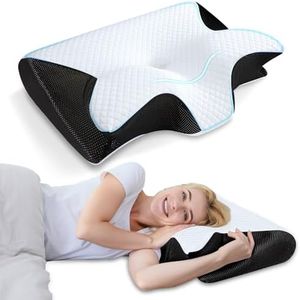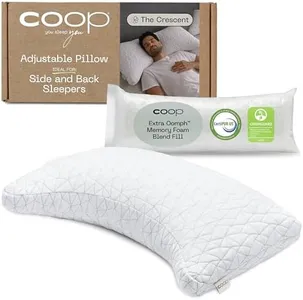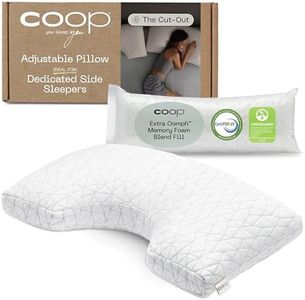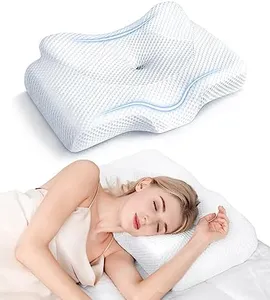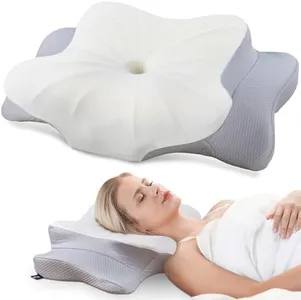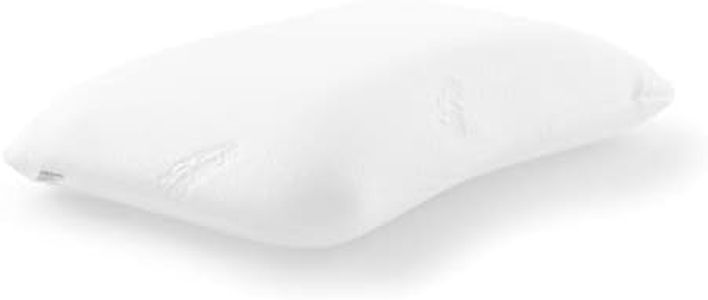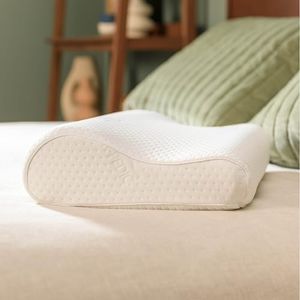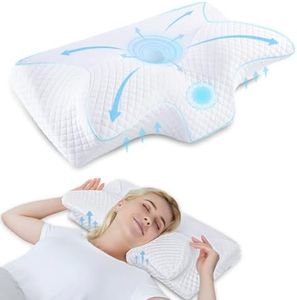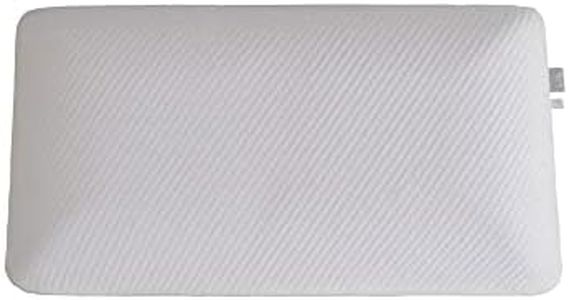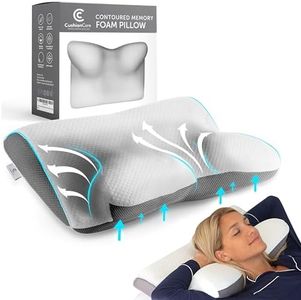We Use CookiesWe use cookies to enhance the security, performance,
functionality and for analytical and promotional activities. By continuing to browse this site you
are agreeing to our privacy policy
10 Best Orthopedic Neck Pillows
From leading brands and best sellers available on the web.Buying Guide for the Best Orthopedic Neck Pillows
Choosing the right orthopedic neck pillow is important for promoting proper spinal alignment, reducing neck pain, and improving sleep quality. The ideal pillow will support your neck and head according to your sleeping position and personal preferences, easing discomfort and helping you wake up feeling refreshed. Before buying, keep in mind how you sleep (on your back, side, or stomach), any existing neck or back issues, and what feel you prefer (firmness, softness, material type). Understanding the key specifications of orthopedic neck pillows will help you choose the one most suited to your needs.Pillow ShapeThe shape of an orthopedic neck pillow determines how well it can support the natural curve of your neck. Common shapes include contoured or wave-shaped designs, cervical rolls, and classic rectangular shapes with neck support features. A contoured or cervical roll pillow is especially helpful if you suffer from chronic neck pain, as it provides targeted support along the curve of your neck and head. A classic pillow with built-in support might be better if you prefer a more traditional look and feel. Choose the shape based on your sleeping position and specific neck issues—side and back sleepers usually benefit the most from contoured shapes, while stomach sleepers may be more comfortable with a flatter design.
MaterialThe material of a neck pillow affects its comfort, support, and durability. Common materials include memory foam, latex, and down alternatives. Memory foam is popular because it molds to the shape of your head and neck, offering customized support and pressure relief. Latex is firmer and more breathable, making it a good choice for those who want strong support and tend to sleep hot. Down alternatives provide a softer, more traditional pillow feel and typically offer less structural support. When choosing material, consider your preference for firmness, any allergies, and if you sleep hot or cold at night.
Firmness LevelFirmness describes how soft or hard the pillow feels. Orthopedic pillows range from soft to very firm. A firmer pillow often provides more support and keeps your neck in proper alignment, especially for back and side sleepers. A softer pillow can feel cozier, but may not give enough structure for people with existing neck problems. Pick a firmness that feels comfortable to you but still maintains support for your neck throughout the night—the right balance depends on your body type, the severity of your neck pain, and your sleep position.
Height / LoftThe height or loft of an orthopedic neck pillow refers to how thick or tall it is. This is important because the wrong height can strain your neck, while the right height keeps your head and neck aligned with your spine. Low loft pillows work best for stomach sleepers or people with smaller frames. Medium loft is a versatile option suitable for most back sleepers, while high loft pillows are ideal for side sleepers or people with broader shoulders who need more elevation. Consider your usual sleep position and body shape to pick the pillow height that fits best.
AdjustabilitySome orthopedic neck pillows offer adjustability features, allowing you to add or remove filling, or modify the shape to better suit your needs. This is useful if you are unsure about the loft or firmness that’s best for you, or if your needs change over time. Adjustable pillows can also be helpful if more than one person might use the pillow or if you want to experiment to find the most comfortable configuration. If you like to fine-tune your sleep setup, or struggle to find the perfect fit, choose an adjustable model.
Cover Material and CareThe outer cover of the pillow influences how it feels against your skin, as well as how easy it is to keep clean. Common cover materials include cotton, bamboo, or polyester blends, each offering different sensations and breathability. A removable, machine-washable cover means you’ll find it easier to keep your pillow fresh and hygienic, which is especially important if you suffer from allergies or skin sensitivities. Decide which cover material feels most comfortable for you and check if it's easy to care for according to your lifestyle.

